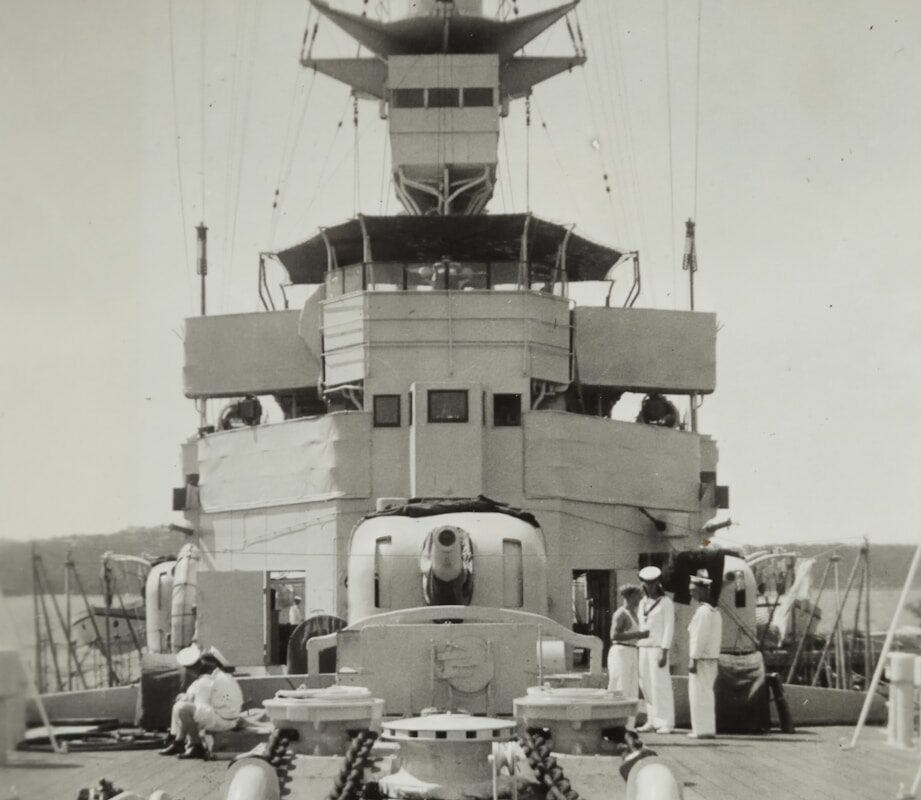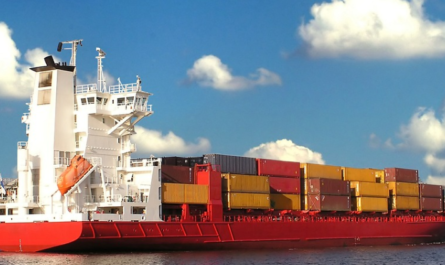The story of World War II is filled with remarkable strategies and decisive moments that shifted the balance of power. Among these, the naval blockades in the Atlantic stand out as a critical tactic that not only curtailed enemy supply lines but also reshaped the nature of maritime warfare. This article delves into the origins, implementation, and long-term impact of the Atlantic naval blockades during WWII, demonstrating how these operations were instrumental in altering the course of the conflict.
The Strategic Importance of the Atlantic
During the early years of WWII, the Atlantic Ocean emerged as a vital arena for both the Allied and Axis powers. The Atlantic was the lifeline for the United Kingdom and other Allied nations, providing essential supplies, reinforcements, and resources from North America and its colonies. Control of this vast body of water was crucial for sustaining the war effort. Conversely, the Axis powers, particularly Germany, recognized that disrupting these supply routes could cripple the Allied war machine.
The sheer size of the Atlantic, combined with its strategic importance, made it a challenging theater for warfare. Both sides understood that victory in the Atlantic would not come from direct confrontation alone, but from a sustained campaign to deny the enemy the resources necessary to fight. This realization set the stage for one of the most extensive and complex naval blockades in modern history.
Origins of the Blockade Strategy
The blockade strategy in the Atlantic was rooted in lessons learned during World War I. During that conflict, the Allied powers had successfully employed naval blockades to weaken the Central Powers by cutting off access to crucial imports. However, technological advancements and changes in naval warfare meant that the strategy needed significant adaptation for the new global conflict.
By the outbreak of WWII, the development of long-range aircraft, advanced submarines, and improved radar and sonar systems provided the Allies with new tools to enforce a blockade. At the same time, German U-boat technology had evolved, enabling the Kriegsmarine to mount a formidable counter-offensive aimed at disrupting Allied shipping. This cat-and-mouse game in the Atlantic, known as the Battle of the Atlantic, would come to define much of the naval strategy of the war.
Implementation of the Blockade
Allied Tactics and Technology
The Allied approach to the blockade was multifaceted, relying on both offensive and defensive measures. The primary goal was to ensure that vital supplies—ranging from food and raw materials to military equipment and fuel—reached the British Isles and other Allied nations without interruption. To achieve this, the Allies deployed a combination of convoy systems, advanced communication networks, and cutting-edge naval technology.
Convoy System:
One of the most effective strategies was the implementation of the convoy system. Merchant ships were grouped together and escorted by warships, reducing the risk of being targeted by German U-boats. This method not only provided mutual protection but also allowed for better coordination and communication. The convoys sailed under the constant threat of submarine attacks, and their success relied heavily on the discipline and cooperation of both military and civilian mariners.
Anti-Submarine Warfare (ASW):
To counter the U-boat menace, the Allies developed sophisticated anti-submarine warfare tactics. Patrol aircraft, equipped with depth charges and improved radar, patrolled the vast expanses of the Atlantic. Naval vessels were outfitted with sonar and other detection systems that increased the likelihood of locating and neutralizing enemy submarines. The use of long-range aircraft, such as the Consolidated B-24 Liberator, extended the reach of these patrols into previously vulnerable mid-Atlantic regions, significantly reducing the operational area for U-boats.
Technological Innovation:
Innovation played a critical role in reinforcing the blockade. The introduction of improved radar systems and the breaking of German naval codes, notably through efforts at Bletchley Park, allowed the Allies to anticipate and counter U-boat deployments effectively. These technological breakthroughs not only enhanced the security of the convoys but also provided valuable intelligence that informed broader strategic decisions.
German Countermeasures
Despite the overwhelming advantages held by the Allies, the German strategy was both bold and innovative. The U-boat fleet, often referred to as the “wolf pack,” was tasked with intercepting and sinking as many Allied ships as possible. German commanders adapted their tactics to exploit any weaknesses in the convoy system, using coordinated attacks to overwhelm the escorts.
The initial phase of the war saw significant successes for the U-boats, leading to a period known as the “Happy Time” for German submariners. During this phase, U-boats operated with relative impunity in the early years of the blockade, inflicting heavy losses on Allied shipping. However, as Allied technology and tactics improved, the tide began to turn. The increased presence of ASW patrols, better coordination among convoys, and the breaking of German codes gradually eroded the effectiveness of the U-boat campaign.
Impact on the War Effort
Economic and Military Consequences
The success of the Allied blockade in the Atlantic had profound economic and military implications. By restricting the flow of supplies to the Axis powers, the blockade not only weakened the enemy’s military capability but also created severe economic hardships. The shortage of critical materials, such as oil, rubber, and metals, hampered Germany’s war production and limited its ability to sustain long-term military operations.
For the Allies, maintaining open and secure shipping lanes was equally crucial. The ability to transport troops, equipment, and resources across the Atlantic ensured that the United Kingdom and later the European mainland remained supplied and prepared for future offensives. The blockade strategy contributed directly to the success of subsequent operations, including the massive D-Day landings, by ensuring that the necessary logistical support was available for the liberation of Western Europe.
Psychological and Strategic Implications
Beyond its tangible economic and military benefits, the blockade had significant psychological effects on both sides of the conflict. For the Allies, the blockade was a symbol of resilience and ingenuity—a demonstration of how a coordinated, technological, and tactical effort could overcome formidable challenges. The ability to protect convoys and secure vital supply lines boosted morale among Allied forces and civilian populations alike.
For the Axis powers, the blockade was a constant reminder of their strategic vulnerabilities. Despite early successes, the eventual tightening of the blockade underscored the limitations of relying solely on offensive submarine warfare. The persistent threat of interception and the steady attrition of resources contributed to a growing sense of inevitability about the outcome of the war. This shift in morale and perception was as crucial to the eventual Allied victory as the tangible losses inflicted on enemy shipping.
Lessons Learned and Legacy
Innovations in Maritime Warfare
The experience of the Atlantic naval blockades during WWII led to significant advancements in maritime warfare. Many of the techniques and technologies developed during this period laid the groundwork for modern naval strategy. Anti-submarine warfare, in particular, saw rapid innovation that continued to evolve in the post-war era. The principles of convoy protection, coordinated patrols, and electronic surveillance remain central to naval operations today.
Furthermore, the success of the blockade demonstrated the value of intelligence and communication in modern warfare. The ability to decode enemy communications and anticipate movements was a game-changer that influenced military strategy across multiple domains. These lessons have been studied and refined by subsequent generations of military strategists, ensuring that the legacy of the Atlantic blockades endures.
Shaping Post-War Naval Policy
In the aftermath of WWII, the lessons learned from the Atlantic blockade influenced global naval policy and the structure of international maritime alliances. The recognition of the strategic importance of secure sea lanes led to increased investment in naval research and development. Countries around the world sought to build more advanced fleets capable of both defending against and executing similar blockade strategies if necessary.
International organizations and alliances, such as NATO, were established with the understanding that the security of the seas is integral to global stability. The cooperative frameworks developed during and after WWII have played a vital role in maintaining peace and security in the decades since. The strategic insights gained from the Atlantic blockades continue to inform the policies and practices of modern naval operations.
Personal Stories and Heroism
No discussion of the naval blockades in the Atlantic would be complete without acknowledging the bravery and resilience of the individuals involved. From the seasoned captains of Allied warships to the merchant mariners who risked their lives in perilous conditions, countless personal stories of heroism emerged from this theater of war.
Many of these men faced the constant threat of enemy attack while enduring harsh weather, mechanical failures, and the isolation of the vast Atlantic. Their determination to maintain open supply lines under such circumstances was nothing short of extraordinary. Their experiences serve as a poignant reminder of the human cost of war, as well as the remarkable courage that can emerge in the face of overwhelming adversity.
The Enduring Influence of the Atlantic Blockades
The impact of the naval blockades in the Atlantic during WWII transcends the immediate military victories and economic advantages they provided. They represent a turning point in the evolution of modern warfare, where the integration of technology, intelligence, and coordinated strategy proved decisive in overcoming a formidable adversary.
Today, historians and military analysts continue to study the Atlantic blockades as a case study in effective maritime strategy. The lessons learned during this period have influenced countless military doctrines and continue to shape the way navies around the world plan and execute operations. The success of the blockade underscores the enduring principle that control of the seas is not merely about military might, but about the effective integration of diverse strategies to achieve a common objective.
Conclusion
The naval blockades in the Atlantic during World War II were a masterstroke of military strategy. By disrupting enemy supply lines and safeguarding vital shipping routes, the Allies were able to significantly weaken the Axis war effort and tilt the balance in favor of a victorious outcome. This campaign was marked by a combination of technological innovation, strategic coordination, and the extraordinary courage of those who sailed the treacherous waters of the Atlantic.
From the inception of the convoy system to the development of advanced anti-submarine warfare techniques, every element of the blockade strategy played a role in transforming the dynamics of the war. The economic, psychological, and strategic impacts of these blockades reverberated far beyond the battlefield, influencing post-war naval policies and leaving an indelible mark on the history of modern warfare.
As we reflect on this critical chapter in military history, it becomes clear that the legacy of the Atlantic naval blockades is not just one of tactical success, but also of human resilience and ingenuity. The ability to adapt, innovate, and work together in the face of daunting challenges continues to inspire future generations of military leaders and strategists. The story of the Atlantic blockades remains a powerful reminder that the control of our seas—and ultimately our destiny—often depends on the courage and determination of those who dare to confront the unknown.



